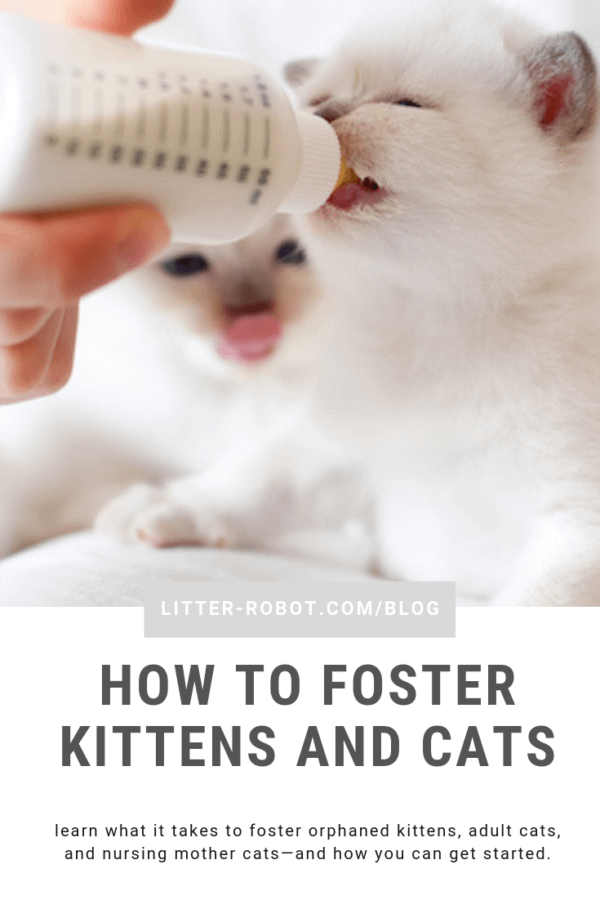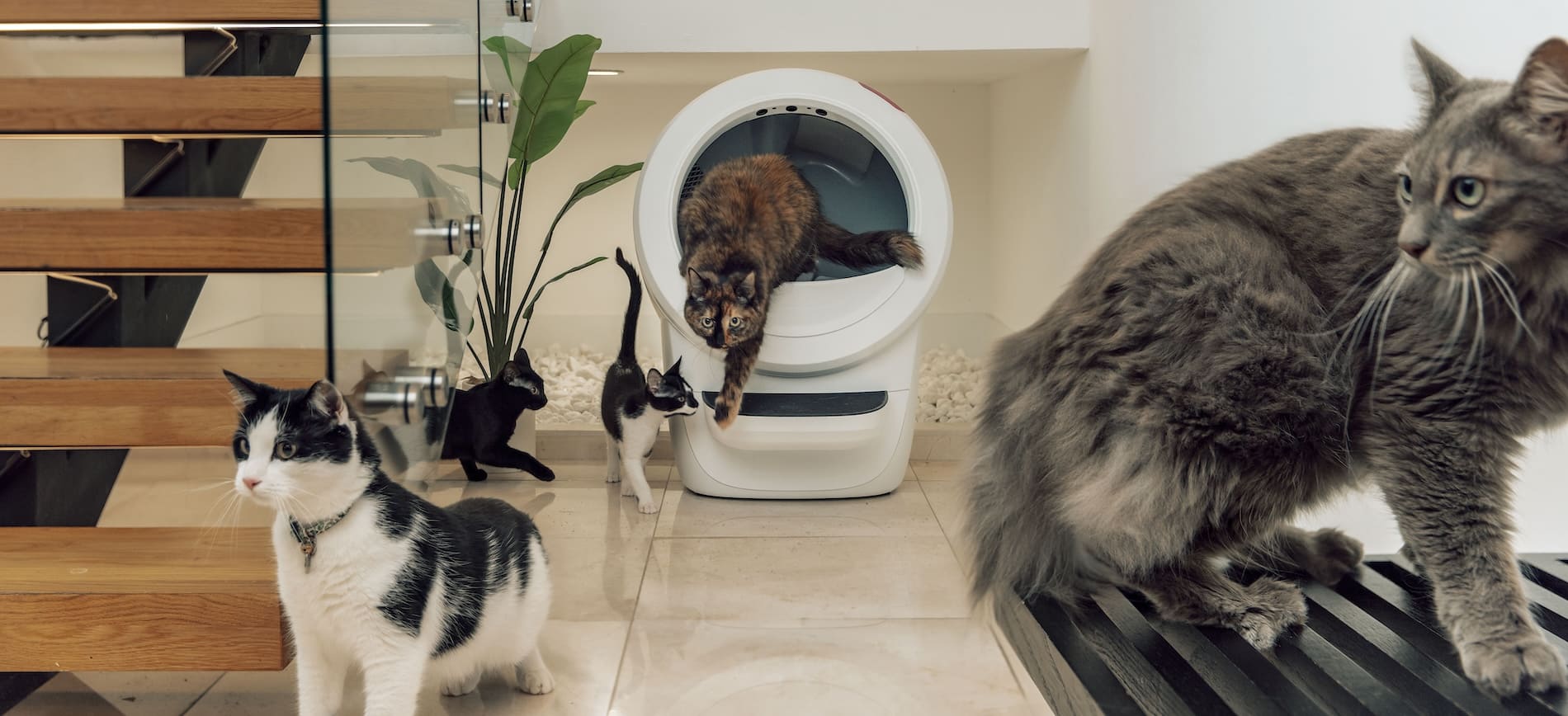May is Foster Care Month, and kitten season is in full swing—which makes it the purrfect time to learn about how to foster kittens and cats! Whether you consider it a hobby or a part-time job, fostering animals is a noble act of caring. But where does one begin? We’ll discuss what it takes to foster orphaned kittens, adult cats, and nursing mother cats—and how you can get started.
Fostering vs. adoption
First, what is fostering? Fostering differs from adoption in that it is a temporary arrangement: You agree to provide shelter and care for a homeless animal until that animal is ready to be adopted, or for a predetermined amount of time until the animal can take up residence at a (preferably no-kill) shelter. However, if you follow the hashtag #fosterfails, you’ll see that it’s not all that unusual for foster parents to end up adopting their foster cats and dogs!
Why foster?
Not only does fostering save lives, it also provides you with an incredibly rewarding experience. Fostering frees up space in local shelters, allows animals to bounce back from potentially traumatic experiences, and emphasizes better socialization than a typical shelter experience would—thus making the animal a better candidate for adoption.
Before you begin
So you’ve decided you want to give fostering a try. Good for you! However, before you go upending your regular routine, make sure you consider the following:
- Is your household appropriate for fostering? Do you have a space for foster animals that is safe and easy to clean? Is everyone you live with accepting of foster animals? Are you able to quarantine them from other animals if need be?
- Does your schedule allow for fostering? For instance, if you foster kittens, you may need to be available as often as every 2-3 hours. Will you be able to arrange care for foster animals when you are unavailable?
- Do you have the right tools and resources? Do you have a veterinarian, should a medical issue arise? If you work with a local shelter or rescue group, will they be available to provide support when you have questions? Will you have the funds to cover food and medical expenses, should the shelter not be able to reimburse you?
Where to get started
The first place you should contact is your local shelter or rescue group to see if they’re in need of foster parents. (They usually are.) They’ll likely ask you to fill out a foster application and may even require a brief home inspection. Once you’re approved, you will work together to place the animal best suited for your home and care.
You may decide to foster if you come across a stray cat or kitten. If you find a stray cat (not a feral), first make sure he doesn’t already belong to a family—bring him to the vet to check for a microchip, and check with local shelters to see if anyone has reported a missing pet.
Should you find one or more kittens, first make sure they are truly orphaned before moving them. If they are clean and plump, their mother is likely nearby. Watch and make sure she is caring for them—if she is, leave them with her. Talk to your local shelter about options to eventually TNR the mama cat and rescue the kittens.
Tips for fostering a cat
Unless you’ve taken in a cat with special needs (health or otherwise), fostering an adult cat shouldn’t require a significant amount of time on your end. Keep these tips in mind:
- Always approach foster cats slowly, cautiously, and in a non-threatening way.
- Start out by confining the foster to a bathroom or spare bedroom. If you have cats of your own, keep them separated until the health of your new charge can be verified. Eventually, if your cats get along, you can allow the foster to have the run of the house.
- Always provide a cozy bed, a bowl of fresh water, and a clean litter box.
- Make sure foster cats eat at least once a day. (Fasting can have serious health consequences in cats.) Try a variety of wet food and dry food until you find what they like. If they resist, encourage them with treats, canned salmon or tuna, and human baby food (no garlic or onion ingredients).
Tips for fostering a nursing mother cat and her kittens
For the first few weeks of kittens’ lives, it is normal for mother cats to do all the feeding and caring for her kittens. In the meantime, use these tips to care for the mother and, eventually, her babies:
- Provide a box that is large enough for everyone, with sides tall enough to keep the kittens from falling out but low enough for the mother cat to get out.
- Line the box with several layers of bedding; as kittens soil the top layer, you can peel it away.
- Provide a nutrient-dense diet for the mother cat, such as kitten food. Offer food several times a day, or consider keeping a bowl of dry food available to her at all times.
- Once the foster kittens start exploring, you can keep them contained in one room with a baby gate. It is okay for the mother cat to jump over the gate and have some time away.
- Begin giving kittens moist kitten food at about four weeks of age. If any seem slow to try it, you can help out by putting a bit on your finger to let them smell it.
Tips for fostering orphaned kittens
You might say that fostering orphaned kittens is the most “advanced” level of fostering, as it is usually much more time-consuming and critical than fostering adult cats or nursing mothers. Let’s turn it over to Hannah Shaw, aka Kitten Lady, for her excellent guide on how to foster kittens. We’ve highlighted a few of Hannah’s tips below:
- If you have a sick or injured kitten in need of immediate care, take them right away to the nearest emergency veterinarian.
- Provide a kitten-proof area that is quarantined off from other animals. This area should have a heating pad set on low, with a soft blanket covering it completely. Also provide a soft blanket for them to lay on that is not directly on the heating pad (so they have the option of moving away from the heat source).
- If the kittens seem in stable condition, get them on a regular feeding schedule: Kittens 0-4 weeks with no mom will need to be bottle fed using a kitten formula (never give cow’s milk to a kitten—this is very dangerous!). At 4-5 weeks, they can eat a combination of formula and wet kitten food. Kittens 5-6 weeks+ can generally eat wet kitten food.
- Kittens below 3 weeks need help with urinating and defecating. After every feeding, use a damp, slightly rough terrycloth washcloth to stimulate the anus and urinary openings.
- Kittens above 3 weeks should be immediately placed into the litter box, so that they learn right away where to use the bathroom. (It is recommended that you use a non-clumping litter when working with young kittens, as it is safer for them in case of accidental ingestion.)
- Once kittens reach 6 weeks of age, they should begin the standard series of vaccines and other necessary testing and treatments, such as deworming. At 2 months and 2 pounds, kittens should be spayed or neutered.
Parting ways
Inevitably, your time with foster kittens and cats must come to an end. Depending on if you’re working with a shelter, the organization may take care of adoption details. If you’re working alone, begin advertising your foster early on—on social media, flyers, local listservs, Petfinder, and Craigslist. Read Kitten Lady’s tips for finding the right adopter for more info.
It is also typical to charge a small adoption/rehoming fee to cover foster care expenses: $50-$75 for adult cats and $75-$100 for kittens.
Finally, there’s one more thing you’ll need to deal with: your feelings when parting ways with your foster. You may be put off by the whole idea of fostering because you think you’ll get too attached. And while many foster parents can attest to the emotional burden of saying goodbye, they also realize that “saying goodbye is truly the best part of fostering, because it means you've opened your home up to be able to save even more animals.” Thanks, Kitten Lady!
Sources:









